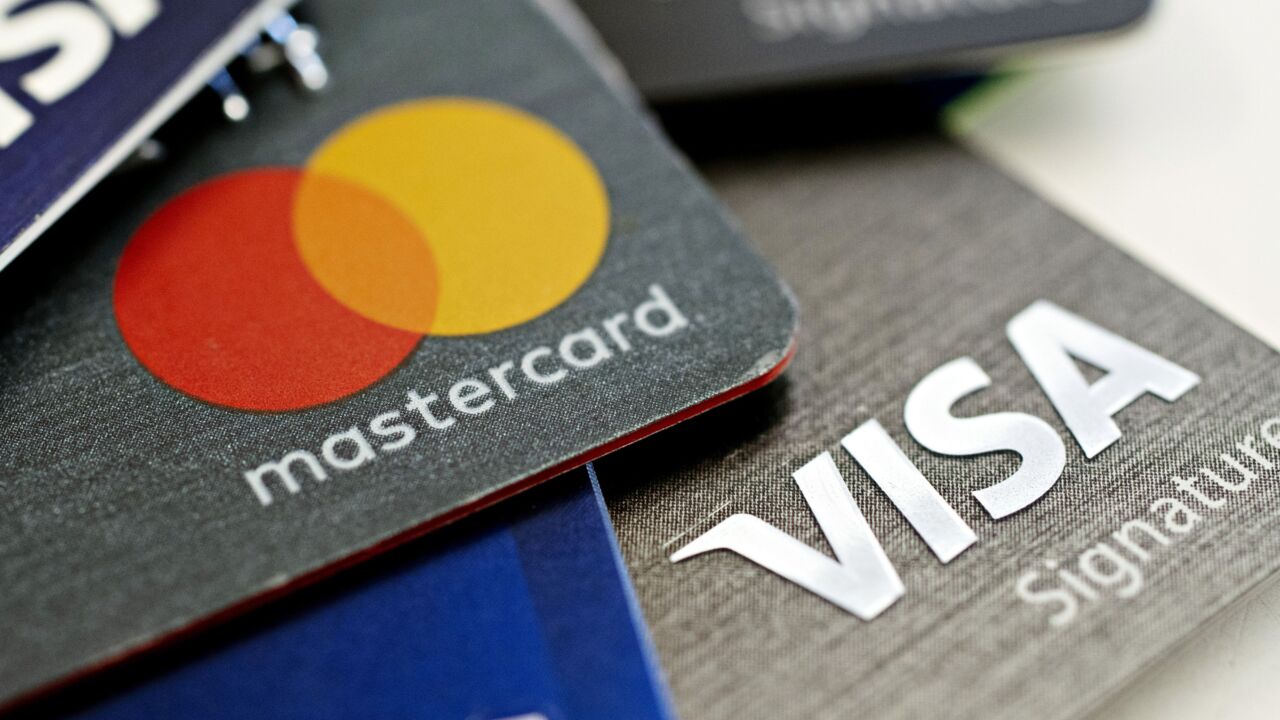Just as the Apple Watch prepares to land in the U.K., Barclaycard is launching three new high-tech accessories of its own and borrowing Apple's practice of attaching a higher-than-average price tag to its wares.
Barclays was already
Barclaycard's new line of products are a wristband, fob and sticker. The company previously offered
"Our consumer testing has shown a real appetite for the unique bPay product and the convenience that it provides," said Barclaycard spokesman Tom Foxton.
The wristband is designed to be used dozens of times a day and thousands of times a year and Barclaycard considers it "much cheaper than almost all other items of wearable technology," Foxton said. "We feel it provides good value for the money."
Barclaycard has years of experience with contactless and wearable payments. The issuer launched the U.K.'s first contactless card in 2007, and in 2011 it worked with the telco Orange to launch one of the U.K.'s first mobile payment applications, called
Though the Apple Watch carries a much higher price tag than any of Barclaycard's wearables, Apple's product is marketed as much more than a simple payments device.
Payment-specific versions of the bPay products, such as Disney's MagicBand or the now-defunct Bling Nation sticker, are typically provided as free add-ons for customers. (Disney also sells its MagicBands as fashion accessories for $12.95, but they are distributed for free to Walt Disney World park patrons and resort guests).
And financial products typically do not fare well as pure fashion accessories. The prime example of this is the
Barclaycard's model is somewhat similar to that of Disney. Its bPay devices can be used by any U.K. resident (not just Barclaycard customers) with Visa or MasterCard credit or debit cards and its devices work with apps to provide users with a certain level of control over their experience.
And even with banking and payments, fashion has some power. It's why such value is placed on the rights to
The bPay sticker is a new "open-market" proposition for all consumers, providing more flexibility and choice for contactless payments, an extension of the PayTag sticker existing Barclaycard customers use now, Foxton said.
The bank's earlier bPay products were offered for free, but as part of the testing period. Its new line of contactless payment devices are considered a commercial product, and thus have a price tag attached. It also marks the first time Barclaycard wearables are available at retail stores.
"The trial phase that we began last year ended on May 31 this year and the wearable bands stopped working on that day," Foxton said. Regular users of the first generation of bPay band will receive a new version free.
However, the bPay products are not one-time purchases. Whenever a bPay device is lost or reaches its natural expiration, users must purchase a replacement, according to the bPay
"Considering that the U.K. consumers are used to 'free' payments, it will be interesting to see how many will see enough value in these devices to actually purchase them," said Zil Bareisis, a London-based senior analyst for research firm Celent.
Barclaycard wants to capitalize on the rising wave of contactless popularity and the inevitable publicity that will follow the launch of Apple Pay, Bareisis said. "Like most markets, the U.K. wearables growth has been driven mostly by fitness or health bands and more recently, Apple Watch," he said.
Barclaycard's marketing seems to be geared toward the fitness-band audience, with some of its promotional material showing its band on the wrist of a cyclist or a group of hikers.
The challenge for Barclays and Apple will be if consumers will want to use contactless payment devices outside of closed environments such as theme parks and concerts.
"There have been successful experiments with payments wearables for specific contexts, like music festivals," Bareisis added.
Consumers using bPay will have a digital wallet linked to the devices to allow contactless payments of up to £20 (U.S. $31.47), rising to £30 when the country raises its contactless payment limit in September at more than 300,000 merchant locations using Near Field Communication.
Users can add funds and manage their device either through the bPay mobile app or the new online portal.
"Were in the midst of a sweeping change in the way we pay, with cash-dominated transactions being replaced by 'touch and go' contactless technology that has made it easier, safer and faster to make low-value payments," Mike Saunders, managing director of digital consumer payments at Barclaycard, states in a June 29 announcement about the new products.
According to the U.K. Cards Association, contactless payments rose 331% year-on-year in 2014 with the public making 319 million contactless transactions with a total value of £2.32 billion using the technology.
At the end of 2014, there were 58 million contactless cards in issue, split between debit (36.9 million) and credit/charge cards (21.2 million).





